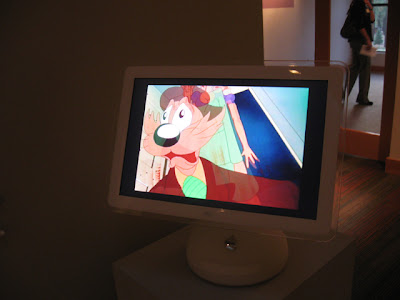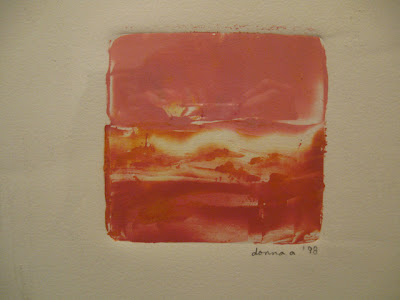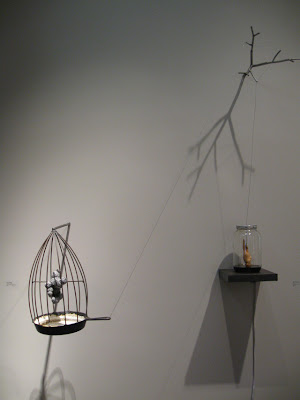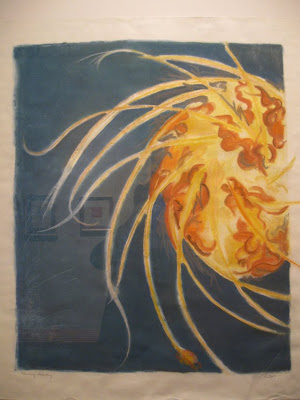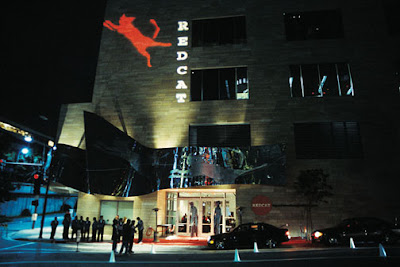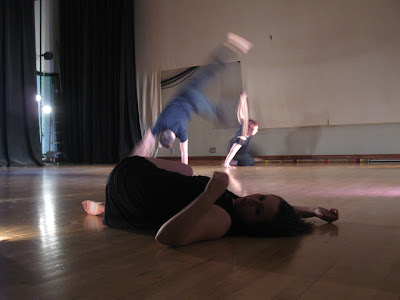The first day of the ETEK L.A. trip tends to be somewhat shambolic, a bit of a random tour of Los Angeles sights before getting down to the weekday business of visiting studios and production houses. This Sunday was no exception, starting off with a delay as they changed the tire on our airplane before letting us board. The delay gave me ample time to sketch out a couple of other stranded passengers on my iPhone.


But eventually, we were up in the air, crossing the sierras before dipping into the brown paste of LA smog. I slept through most of it; Sarah took the pic below.

After some breakfast/lunch off Wilshire Boulevard, we hit the LaBrea Tar Pits.



Much of the displays seem a bit old-fashioned; the animatronic animals, like the small mammoth, or the saber-tooth tiger locked in a perpetual
dinner interruptus with a giant sloth, have shuddery stalling movements, as if they're constantly second-guessing themselves, and you can hear faint clickings under their fur. And the large mural that you see on entrance is quite hyerbolic in its insistence on carniverous drama. Check out this sabertooth tiger, who looks not just hungry but also clinically insane:
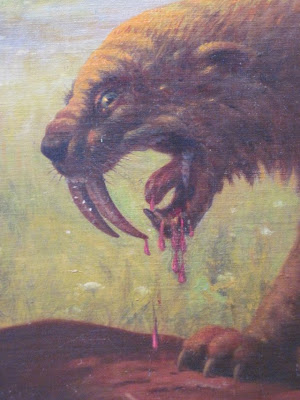
But those sorts of details constitute part of the offbeat charm of the site. There's something inherently comical/horrible about the sort of image that is emblematic of the rich fossil finds at LaBrea: the vision of a dead horse, with a dead sabertooth tiger glued on top of it, and then some enormous vultures stuck on top of the tiger, all sinking together into the tar under the accumulated weight of the food chain. It has the ridiculous momentum of those children's songs that build on an ever-expanding chain of misfortune:
she swallowed the cow, to catch the dog, she swallowed the dog, to catch the cat, she swallowed the cat, to catch the bird...



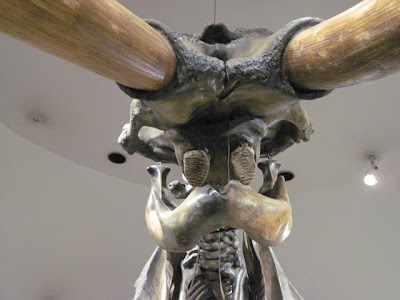
There's an impressively fastidious painting of the prehistoric LaBrea area by
Mark Hallett included with the displays. Although it doesn't offer much relief from the carnivorous round. There's one fox, sleeping placidly in the hollow of a felled tree trunk, but other than that, it's nature "red in tooth and claw," with a pretty robin proffered only to spill its guts to a hawk, and even the lowly earthworm unspared, wriggling in the maw of a mole.


I think the most interesting part of the museum is the scientific "fishbowl," where you can watch excavators at work behind glass, removing the fossils from their cement of excess rock. Peeking at the dry-erase boards posted for the edification of us spectators outside the bowl, you learn that the excavators like to give the exhumed skeletons names like "Zed," "Fluffy" and "Conan." They're also eager to expand their contact beyond the fishbowl -- a URL was posted for
The Excavatrix, "the semi-official blog of the excavators and excavatrices at the La Brea Tar Pits in Los Angeles, CA," at which you can find stories of long-dead gastropods, and dragonflies stuck together with asphalt.



From there it was a quick hop to LACMA (we didn't even have to leave the parking lot -- a smooth continuity from asphalt to tar to art). There's an exhibit called
Heroes and Villains: The Battle for Good in India's Comics currently up, which seemed promising. As the blurb has it:
This exhibition examines the legacy of India’s divine heroes and heroines in contemporary South Asian culture through the comic book genre.

The exhibit had some nice work, especially some pages by Mukesh Singh and Abhishek Singh (the latter employing a dynamically loose inking style that you can get a hint of in the black and white reproduction below). I wish more work had been on display -- it was more of a sampler plate than a full-course meal. The image directly below, showing
Durga defeating the demon Mahisha (as he assumes the form of a buffalo), isn't included in the LACMA show, but it's similar to another piece representing the same story, dating to the mid 1700s, which
is in the show. The way Durga's multiple arms seem to be a form of animaton, in the way that speed-lines or superimpositions can suggest frantic or rapid movement, formed a tenuous but suggestive link between 18th-century illustration and 21st-century comics.


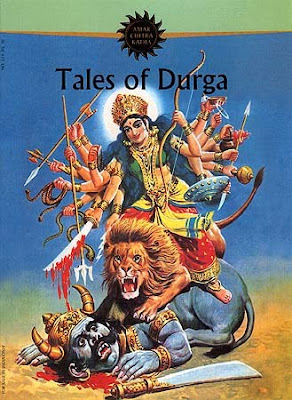
For me, the highlight at LACMA was probably the roomful of Giacomettis (the pic below isn't from LACMA's collection, but the head is similar to one of the heads on display there). The surfaces of his figures are so whittled at, so chipped away (as if an excavator has scraped his way to bone, then kept scraping), that the light falls and scatters over them, not like an illumination, but like a thin tissue of spiderweb, torn against the ridges of substantive fact.

And then we drove down Hollywood Boulevard -- and after that finally corkscrewing up into the Hollywood Hills, ultimately (after a few involutions and wrong turns, and a bit of GPS consulting via iPhone) looping up Mulholland Drive, getting close enough to the HOLLYWOOD sign that we could make out the vultures wheeling in the blue air directly above it.

 (The last two pics were snapped by Sarah)
(The last two pics were snapped by Sarah)
